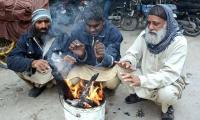As smog envelops Lahore, it triggers a political blame game. Pakistan maintains a consistent presence among the world’s most polluted countries, securing the third position in the latest 2022 report by IQAir.
According to the same report, Lahore emerges as the most polluted city globally. Despite toxic smog being a recurring annual occurrence for the surging population – now at 242 million people –there appears to be reluctance among stakeholders to shoulder responsibility.
When smog subsides, the political mudslinging will ensue. Persisting for over a week, pollution levels in Lahore have consistently lingered in the ‘hazardous’ category, as tiny particulate matter in the air reached 450, a level 30 times higher than the maximum average daily exposure recommended by the World Health Organization. The city’s residents find themselves compelled to inhale air laden with pollutants surpassing healthy limits.
Various factors contribute to Lahore’s annual pollution season, including cars, factories, construction, and power plants. Another major contributor is the seasonal burning of wheat stubble in the neighbouring areas of the province. Farmers set fire to their fields to clear them quickly for new crops. According to the Centre for Science and Environment, stubble burning has been responsible for up to 38 per cent of the pollution levels in Lahore over the past week.
Despite the annual arrival of the consistently murky grey skies and a recent study revealing that pollution is reducing the lifespan of the residents of Lahore by nearly seven years, there is notable absence of willingness among both state and central governments to assume responsibility.
Muhammad Salman, 31, who runs a roadside tea stall for up to 14 hours a day, told me, “Despite government assurances to improve Lahore, nothing substantial has transpired. My eyes experience a burning sensation, and my head feels dizzy. I am concerned about my future,” accusing lack of action and indifference on the part of the government, transforming Lahore into a ‘gas chamber’. He said that the residents of Lahore are expressing discomfort with itching and breathlessness, while children are falling ill. Instead, he pointed out that the central government was ‘inactive’ in addressing air pollution.
It seems as though there was significant frustration with the perception that pollution was treated merely as a localized problem shuffled here and there. It seems that more effort is directed towards avoiding responsibility instead of addressing root causes.
The government must recognize that no city can exist as an isolated haven of clean air. It is imperative that this becomes a shared political responsibility, as without collaborative efforts, a solution remains elusive.
There is a failure to recognize that pollution is not merely a temporary problem but one that demands a comprehensive, long-term overhaul of regulations, laws, and institutions at both the state and national levels.
This lack of foresight is a significant aspect of the issue. Because the problem is not confined to November or December, it persists throughout the year and requires a continuous approach. While provincial governments have neglected crucial measures, the role of the central environment ministry in this scenario is questionable.
Residents of Lahore, including those whose livelihoods compel them to endure the toxic outdoor air, are experiencing a mix of anger and resignation. They confront the daunting prospect of enduring weeks, and possibly months, of hazardous air, sparking a sense of frustration among the affected population.
Ali Raza, aged 55 and employed as a security guard at my workplace, shared his experience of persistent dizziness with me. He highlighted that the people around him, including himself, were grappling with a range of health issues such as headaches, coughs, fevers, and nausea. Expressing the tangible awareness of inhaling something highly toxic, he remarked, “We are in a city where breathing, the most fundamental human need, feels terrible. I struggle to imagine what the future will look like.”
The smog problem in Lahore is not only a health hazard but also significantly impacts daily life and economic activities. Reduced visibility on roads poses risks for commuters, and the aviation sector often experiences disruptions.
The thick smog layer casts a pall over the cityscape, affecting the overall ambiance and quality of life. Efforts to mitigate this crisis require a comprehensive approach, encompassing not just curbing immediate pollution sources but also implementing long-term sustainable practices. This involves promoting cleaner industries, adopting eco-friendly agricultural practices, and encouraging public awareness to foster a collective commitment to combating the persistent smog issue in Lahore.
The writer is an independent journalist from Karachi and can be reached at: sara.amj@hotmail.co.uk
There are over 11 million Pakistanis settled abroad, out of which around six million work in Gulf and Middle East
This year alone, US Treasury would have to roll-over $10 to $14 trillion in maturing short-term debt
Tear gas no longer marks just protest sites; it paints entire cities as battlegrounds but then again, PTI did it first
Political structures and governance systems have been central to economic and social development
It is confirmed now 40 Pakistanis had died after boat of migrants had capsized in sea near Greece
Many people believe that in future, AI will play an even more significant role in their lives







